*This article is reproduced from the official account of autocarweekly
Author: Karakush
These days, General Motors has made great efforts to showcase its GMC Hummer electric pickup trucks in China.
For many car enthusiasts, seeing the electric Hummer is just as exciting as seeing an electric Ferrari, and they feel overwhelmed. The era of gasoline is coming to an end, and the traditional vehicle of pure masculinity has been transformed into a “girly” vehicle.
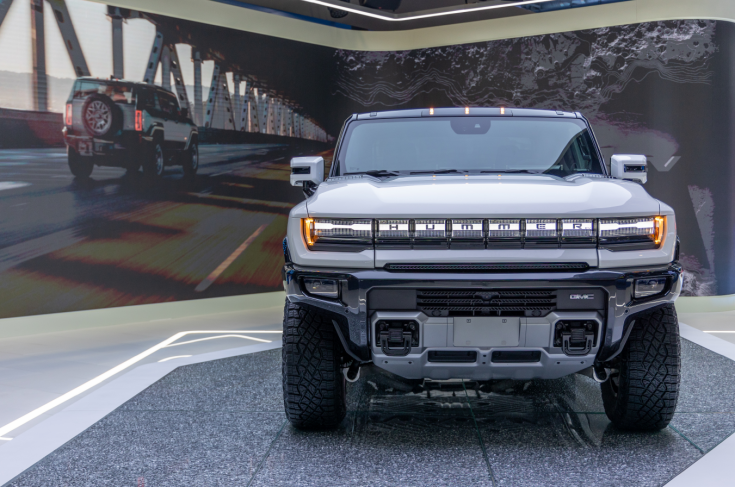
Frankly speaking, pickups should have been the first to be electrified. They can better utilize electric torque for traction, loading, and off-road capabilities. With their larger size, more batteries can be packed in, and they are priced higher to offset the cost of batteries. The fact that electric pickups are only now beginning to appear can be considered a historical bug.
From a market perspective, however, it is understandable. China and Europe do not have strong pickup truck traditions, and the pickup truck customer base in the USA is mainly comprised of elderly white men. The previous administration did not do much to promote the permeation of electric vehicles. Nevertheless, this does not hinder the trend of electric pickups.
General Motors is responsive to this trend, and the electric Hummer is the first batch of their new generation of electrification progress.
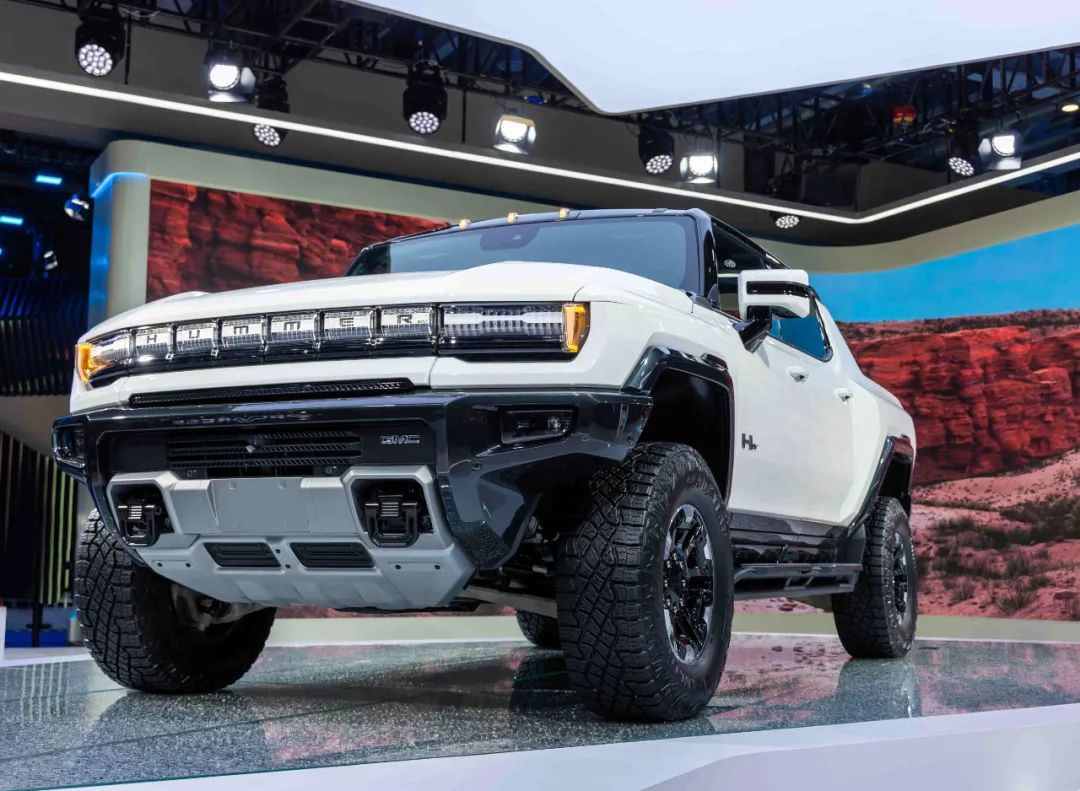
This limited first edition is a credit to the reputation of the Hummer. It is equipped with three electric motors, producing a maximum power output of 746 kilowatts and a maximum wheel torque output of 15,592 Newton-meters. It is important to note that this is the wheel torque, which is several times greater than the electric motor torque that we typically talk about. According to reports from insiders at GMC, the actual torque is probably around 1,000-1,100 foot-pounds, which is equivalent to 1,355-1,491 Newton-meters and full of brutal force.
The first edition also offers a special WTF mode, with a full name of Watts to Freedom, which is equally ferocious in terms of its performance and name, and can achieve a century sprint in only about 3 seconds. This is an electric pickup, after all.

In addition, it has some rare off-road features (which will also be available on the regular version), such as CrabWalk, which can lock the front and rear differentials at the same angle for low-speed diagonal driving. Extract Mode is another feature, which can increase the adaptive air suspension by about 15 centimeters, coupled with the original 35-inch tires, makes it highly capable of navigating through rugged terrain.
General Motors’ electric Hummer has paved a new path for zero-emission pickups, but this statement is not entirely accurate, as there are at least two other electric pickups, the Ford electric F-150 and the Rivian RT1, on the road and both have a common goal, to defeat the Tesla Cybertruck. The race is becoming increasingly crowded and competitive.
This battle is not as far away as you might think.
Many of my friends have pre-ordered the Cybertruck, and either way, it can be canceled, and $1,000 can be used to ease the pain.
Now even the electric Hummer, has a chance. Julian Blissett, General Motors global executive vice president and president of General Motors China, mentioned that GM is actively pushing for “exhibits to become commodities”.
This means that GM China is building a high-end import business and has entered the substantive preparation stage. Felix Weller, Vice President of GM’s high-end import business, began to speak out, a clear signal that he will “strive to introduce the GMC electric Hummer to the Chinese market”.
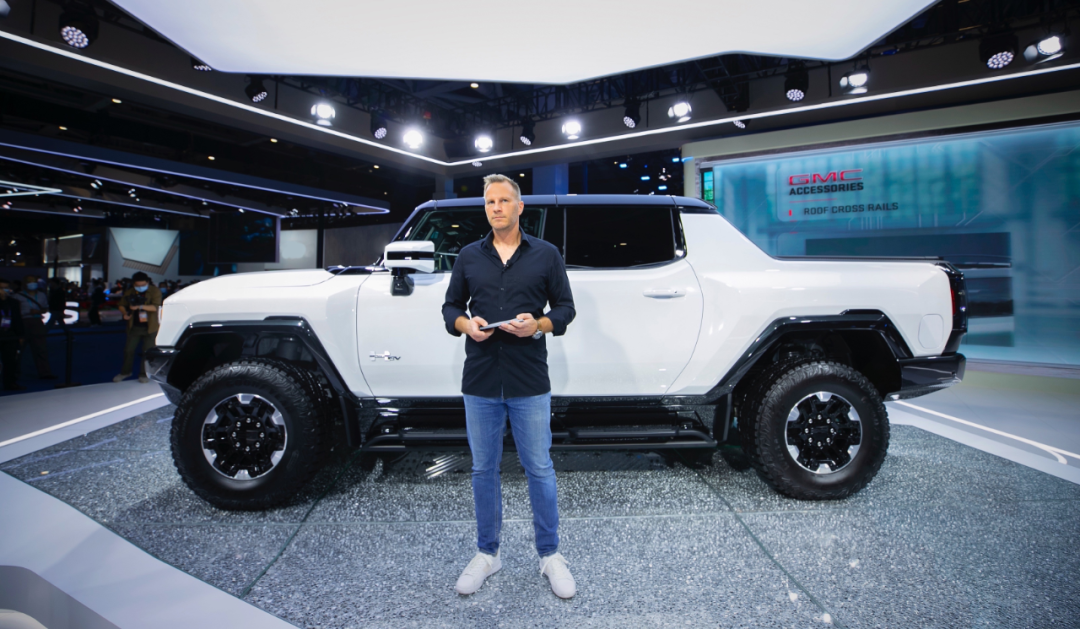
Tesla or Hummer
For now, news has just been announced, and specific details such as channels have not yet been decided and there is still much localization work to be done.
Some might say that what they lack is a legitimate purchasing channel, the funds for the purchase, an understanding family member, a sufficiently large parking space, a suburban villa that matches their lifestyle, and the freedom to control their time….
But when it comes to choosing between Tesla and Hummer, one can still argue. Just like choosing between Yang Mi and Liu Yifei, the more difficult it is to obtain, the more tempting it becomes.
On paper, there isn’t much difference between the two. Both have not fully demonstrated their capabilities, and what they have shown needs to be carefully considered.
For example, the highest-performance version of the Cybertruck also comes with three electric motors, accelerating from 0 to 60 miles per hour in 2.9 seconds, and offering a range of 500 miles. This makes the electric Hummer seem mediocre, with similar performance but only able to provide 350 miles of range and a starting price that is much more expensive. The Cybertruck three-engine version starts at $69,900, plus the additional cost of Full Self-Driving (FSD) which is just over $70,000; while the electric Hummer three-engine version starts at nearly $112,600.
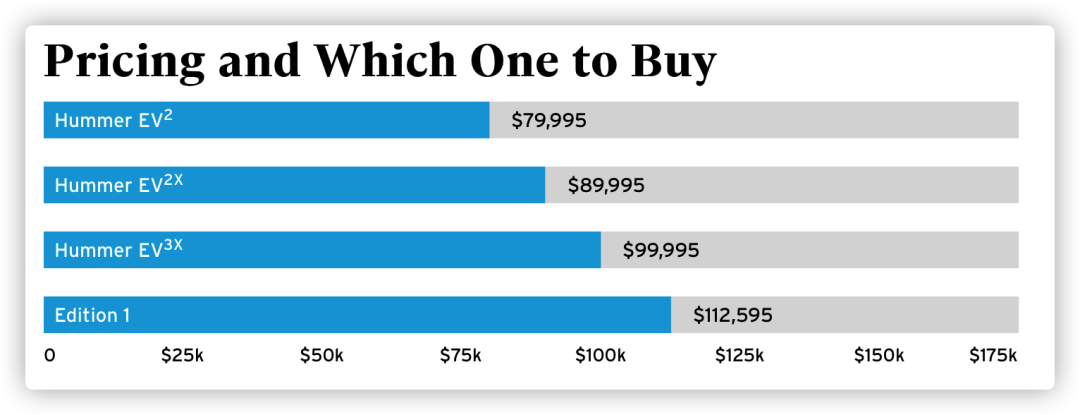

However, the electric Hummer weighs more than 9,000 pounds (about 4.1 tons), and there is no official data on Cybertruck. According to Electrek’s estimate, Cybertruck weighs between 5,000 to 6,500 pounds (about 2.2 to 2.9 tons) and can differ by an entire vehicle due to variables such as frame materials and luxury configurations. With this glaring difference, the WTF factor of the electric Hummer is especially high.
The fundamental difference between the two can be seen at a glance:

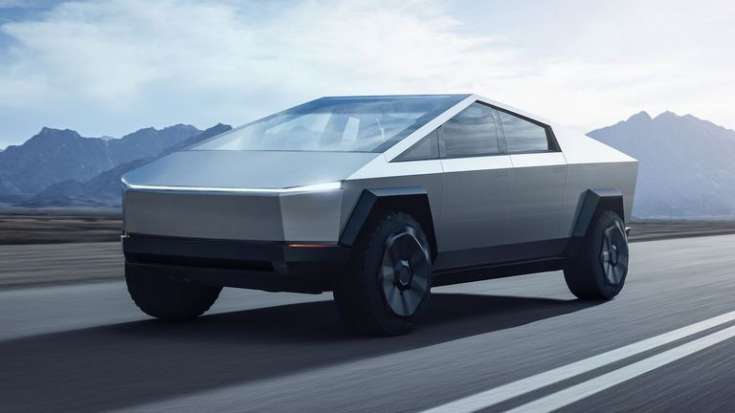


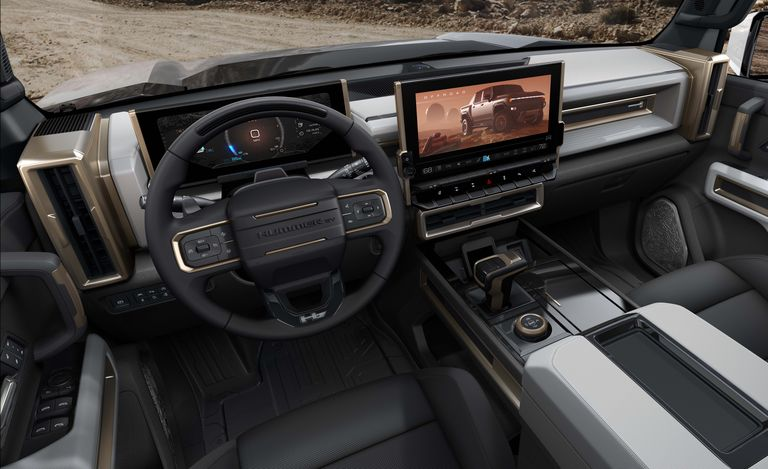
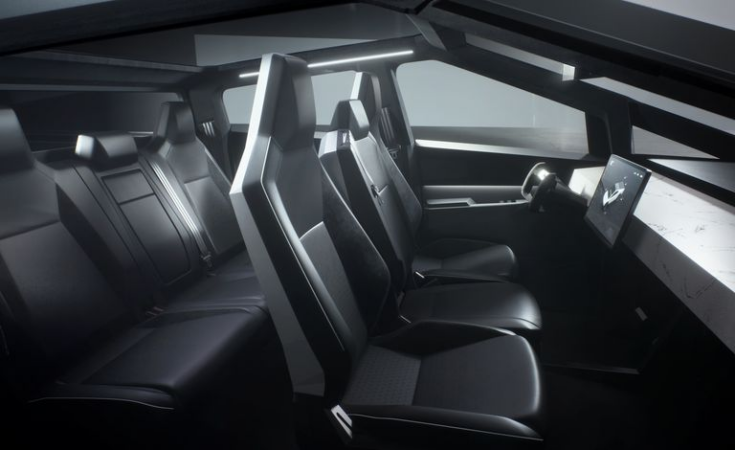
It’s like products from two different civilizations.
Musk once pointed out that Cybertruck pays homage to the 1982 film “Blade Runner.” Just as the film itself created the origin of cyberpunk aesthetics, Cybertruck is the first time cyberpunk has been applied to automotive products in terms of visual style. It’s not an exaggeration to say that it’s not just a different design, it’s a historic turning point that makes people feel that the face of cars will be split in two.
In contrast, the electric Hummer is a “serious car” with interesting features, such as the standard Infinity Roofless Roof and the detachable sunroof cover, making it a convertible electric vehicle. It’s like “Dune” with unlimited realism restoring convincing science fiction.
It is hard to say which one is more popular. After Cybertruck was released, the capital market’s first reaction was a drop of more than six percentage points, worrying that such a design would make it difficult for many buyers to accept; but now its order volume exceeds 1.25 million, more than twice the annual sales of Tesla.
The electric Hummer once again shows GM’s familiarity with the pickup truck market. They know exactly what can please pickup buyers. The product reflects the target accurately, and is an efficient conversion of high-end fuel pickup users. “No one can touch us in the electric truck field,” GM CEO Mark Reuss has publicly stated.
Except for production progress, this statement is hard to stand. Tesla Cybertruck was released in 2019 and has officially announced its delivery delay until next year. But according to Tesla’s usual style, it is not a reliable number. In contrast, the electric Hummer’s production prototype has been seen everywhere in Michigan for testing and calibration. It will be produced at GM’s electric vehicle assembly Factory Zero in Detroit, and is expected to start production of electric Hummer pickups this year, and electric Hummer SUVs by 2024.

However, market experience tells us that consumption logic is not that I want to buy an electric car, so I go to the manufacturer who sold me a fuel car before and see what product catalog they have updated; instead, I will directly look for the manufacturer that is best at making electric cars on the market. Compared with the logic of increasing and changing purchases in the past, it lacks consumer loyalty. Traditional automakers who are not doing well in selling electric vehicles now are losing to this: few people know they are selling, and even fewer people think they are good. The more deeply they are bound with the positioning of traditional fuel vehicles, the harder it is to establish the image of an electric vehicle expert.
In the short to medium term, the more electric products that can make the public rave, the more it can arouse the sense of identity of segmented demand.
This will make some overly precise strategies worrisome.
GM wants to be a good guy
The Dune analogy is not a coincidence.
Recently, I watched Dune again in 2D IMAX. Many people will not watch it a second time, and this IP is not very popular in itself. It is often reduced by upmasters as a sci-fi copyright game. This is like saying Kubrick is Nolan of the last century, or Tesla is the XPeng of the United States. It can make Musk so angry that he wants to sell his stock again.# George R.R. Martin’s Inspiration for Game of Thrones Came from Dune
George R.R. Martin has publicly stated that his inspiration for A Song of Ice and Fire came from Dune. However, 50 years have passed since Dune was released, and it is buried in the circle. It is not surprising that the audience does not recognize and respect it due to the long time span and numerous derivatives. There are both good and bad works, like the clichéd plot of Dragon Oath, which has desensitized the audience.
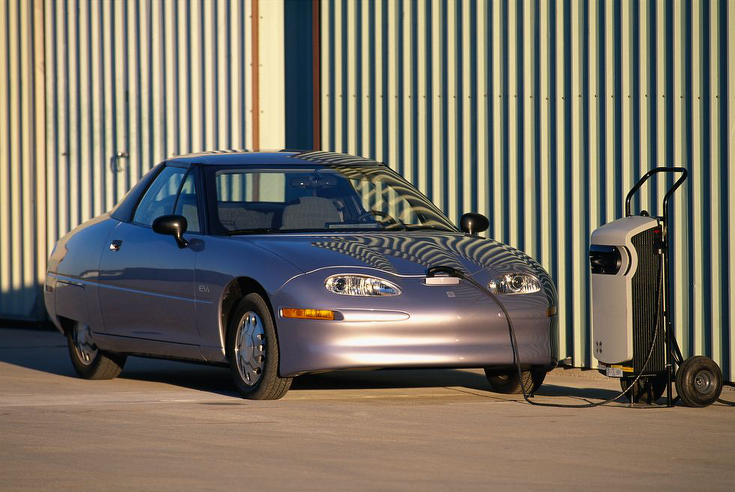
To a certain extent, General Motors (GM) is also facing similar dilemmas. They are happy to promote their deep accumulation of expertise in the field of electric vehicles, which is commendable. They have indeed invested a lot of money, launching EV1, the first electric vehicle to be mass-produced in modern history, which later became the fuel for Tesla’s rise. They also took a long time to get the first Volt started and were in the midst of bankruptcy when the Volt project was underway. However, whether in China or the United States, GM has always had a hard time getting labeled as an electric vehicle enterprise.
In the United States, GM launched the Chevrolet Bolt EV/EUV, which has a gap compared to Tesla’s Model 3/Y, but is the best-selling model other than Tesla. However, it had to stop production recently to address battery issues.
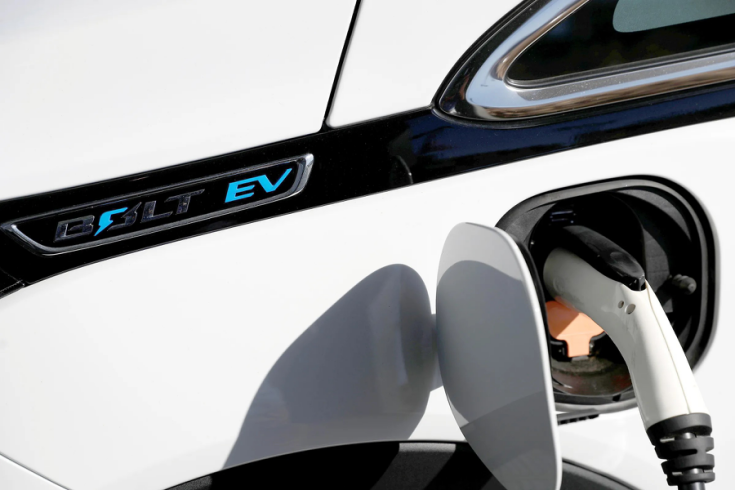
In addition, there is wavering determination. GM has seriously pursued electrification many times, but they will actively ask for the dilution of emissions regulations as long as political slackness occurs. In fact, GM aims to double its revenue by 2030, and expanding fuel vehicle sales is still an important measure. Other traditional carmakers are largely the same, as they still need to maintain profitability with fuel cars.
In China, they have not established standing products. NIO is good, but not good enough:)
Of course, this situation may change. Leading the way is the Cadillac LYRIQ, an anticipated product that can bring shock at least from its parameters and design.
Like the electric Hummer, it is based on GM’s Ultium platform. Technically, it has a high degree of flexibility and derived ability, which can cover different brands, different sub-segments, different ranges, and drive system combinations to maximize economies of scale, accelerate technological iterations, and reduce costs. (I have written about it many times before. You can check it out if you are interested:)
GM has proposed two important deadlines: to achieve global product and operational carbon neutrality by 2040 and to achieve zero emissions for all new light vehicles and phase out almost all pure gasoline and diesel vehicles by 2035. This makes the platform that can be electrically powered in large quantities extremely important.
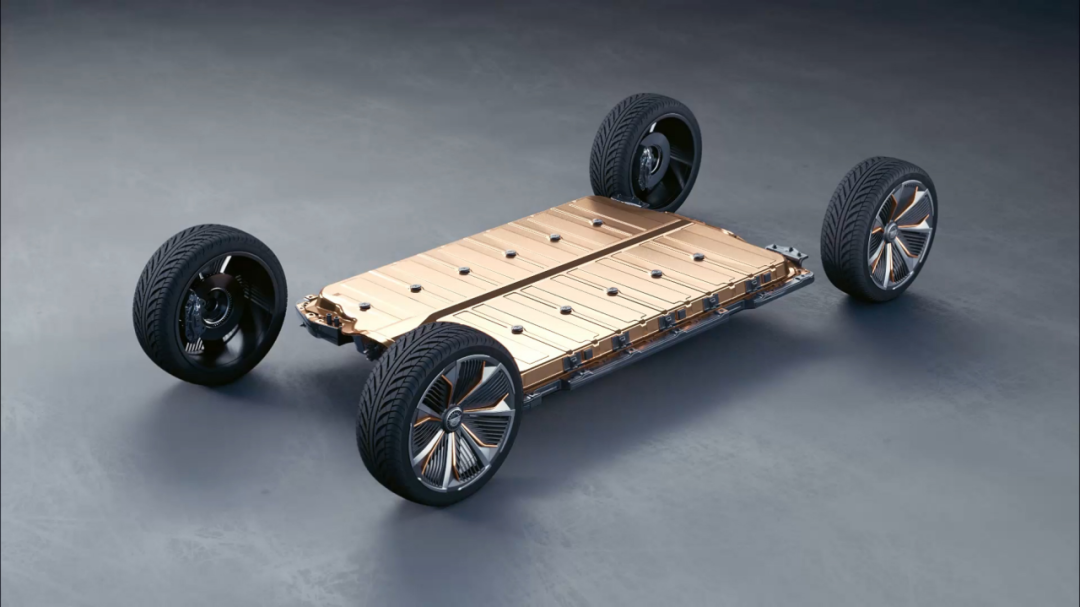 The biggest challenge for electric car manufacturers, beyond the challenges on the supply side, remains convincing the market to buy their electric cars and establishing their image and brand story. In late October, I attended a conference hosted by General Motors (GM) and three speakers presented different perspectives on the topic of image.
The biggest challenge for electric car manufacturers, beyond the challenges on the supply side, remains convincing the market to buy their electric cars and establishing their image and brand story. In late October, I attended a conference hosted by General Motors (GM) and three speakers presented different perspectives on the topic of image.
However, GM’s consistent response was its clear vision of “Zero Accidents, Zero Emissions, and Zero Congestion” to showcase its determination towards electrification. As a “responsible citizen,” GM aims to upwardly trend the entire value chain with its strategy in line with China’s plan and global strategy, indicating its contribution to China’s business development focus.
However, this answer was not what the speakers had expected. Traditional car manufacturers have their own strategies like the classic luxury campaign from BBA to Porsche, who do not need a new brand image. They have consistently been deploying their electric vehicles, with the prerequisite that they are decent vehicles first, like a Mercedes, BMW, Audi or Porsche, secondly that they are electric.
In the Volkswagen Group, Toyota prefers to remain calm and not be seen as aggressive while focusing on hydrogen energy backup while Volkswagen pushes ahead with electric vehicles in the market.
GM appears to want to be just a “good guy.” GM plans to build long-term trust with customers and invest USD 35 billion between 2020 and 2025 in electrification and autonomous driving R&D. They must balance this with the reality of the still-existing demand for petrol cars.
GM’s mission is for the benefit of the vast majority of people. Their investment in large-scale strategies, innovation, cost advantage, and all compromises made in the process, are for the Enqin-style ideal. However, we must be fully aware of the continuously changing rules of the game.
We always believe that electric cars will still be an old-fashioned competition. Early on, the competition was about battery manufacturing, and it was very difficult as the development of chemicals and processes were slow and hard. Now, it has moved towards smart technology, which is based on intense data accumulation that cannot be replaced with shortcuts or even genius sparks. Therefore, electric vehicle manufacturing cannot avoid the nature of mass production, where it is necessary to improve efficiency while reducing costs.This is why the industry believes that a traditional automotive company like General Motors, with its epic system capabilities, can always wait for its opportunity despite being bulky and massive. It is slow, not like an elephant, but like an aircraft carrier, uninspiring, yet capable of turning the situation around.
However, Tesla has greatly accelerated the pace of competition. They seem to announce new technological and marketing breakthroughs every month, and Musk believes that manufacturing capability will also become one of Tesla’s main advantages. For example, Volkswagen was shocked by Tesla’s Berlin Super Factory, which produces each car in just 10 hours, while Volkswagen’s Zwickau factory takes more than 30 hours on average, and Volkswagen aims to shorten it to 20 hours. Scale competition may also bring about a new rhythm.
Time is more disrespectful of the audience than of the elderly.
General Motors is accelerating. Mary Barra recently stated that by 2025, General Motors can “absolutely” catch up with Tesla in electric vehicle sales in the United States. By then, General Motors will launch about 30 new electric vehicles, perhaps enough to drown out the current leader of electric vehicles with quantity.
To break it down, to catch up with Tesla within four years, you need to believe that General Motors can catch up with Tesla in the next two years, and then accelerate for two more years, and accelerate faster than Tesla. Of course, Tesla is not unbeatable. IHS Markit estimates that its share of the US electric vehicle market will decrease from 79% in 2020 to 56% in 2021, and then to 20% by 2025.
But will General Motors be the one to bring it down from its pedestal? At least we can also hope that 30 new electric vehicles may be enough to remember that General Motors is a professional electric vehicle company.
This article is a translation by ChatGPT of a Chinese report from 42HOW. If you have any questions about it, please email bd@42how.com.
